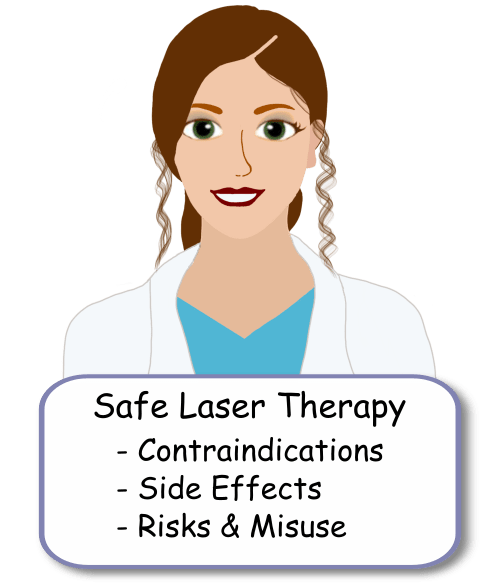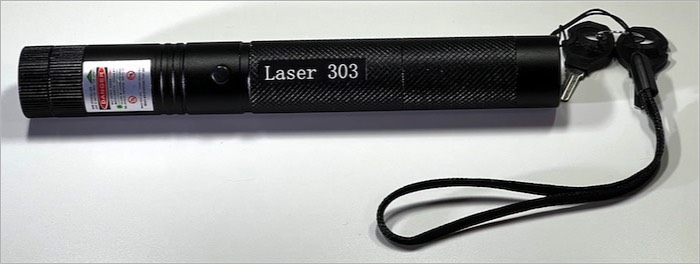Best News For Deciding On Safe Laser Device
How Can Low-Level Safe Laser Therapy (Lllt) Help With Locomotor Pain And Sports Injuries?Safe Laser's low-level treatment (LLLT) thanks to its anti-inflammatory properties, is able to reduce swelling and pain associated with sports injuries. The reduction in inflammation could help reduce swelling and pain that is that are caused by injuries.
Accelerated Tissue Regeneration LLLT stimulates cell proliferation and metabolism, leading to faster tissue growth and repair. It boosts collagen synthesis that is essential for healing of injured muscles, ligaments, and tendons.
Pain Relief- LLLT modulates pain perception through affecting nerve conduction and reducing the release of pain-related mediators like substance P. It also stimulates the release of endorphins which are substances that relieve pain naturally produced by the body.
Improved Blood Circulation- LLLT improves vasodilation and microcirculation, leading to increased circulation of blood to the affected region. Improved blood flow delivers oxygen and nutrients to tissues to facilitate healing and reduce recovery time.
Muscle Relaxation- LLLT assists in relieving tension and muscle spasms through the release of nitric Oxide, which causes smooth muscle relaxation. This is especially beneficial for athletes suffering from stiffness and tightness.
Preventing Scar Tissue formation - by encouraging tissue regeneration, LLLT helps minimize the creation of scar tissue. This may limit mobility and result in chronic pain if it is not managed properly.
Increased Range Of Motion LLLT helps reduce inflammation and pain to increase joint flexibility, allowing people to return quickly to their regular routine.
Overall, Low-Level Laser Therapy using Secure Laser is a non-invasive, drug-free method of managing sports injuries and locomotor discomfort. This therapy promotes faster recovery and improved functional outcomes for patients suffering from musculoskeletal problems. Follow the top safe laser árak for site recommendations including laser kezelés, lágylézer kezelés budapest, safe laser bérlés, lézer bérlés, lezer kezeles, mozgásszervi betegségek kezelése, safe laser készülék, otthoni lézer kezelés, laser hu, lágy lézer and more.

What Are The Benefits Of Safe Lasers To Treat Ear, Nose, Sinus And Throat Problems?
LLLT (low-level laser therapy) offers a variety of mechanisms which can aid in treating ENT disorders. This is beneficial for conditions such as sinusitis, tonsillitis and rhinitis where inflammation contributes to symptoms such as nasal congestion, sore throat, and ear discomfort.
Pain relief LLLT helps reduce pain by altering nerve conductivity as well as reducing pain mediators like the substance P. It can also help alleviate pain caused by ENT conditions like the pressure of sinuses or earaches.
Enhanced Healing of Tissues- LLLT can accelerate tissue regeneration and repair by promoting cellular growth and metabolism. LLLT aids in faster healing of tissue in ENT disorders such as otitis or pharyngitis.
Improved blood circulation - LLLT increases microcirculation as well in vasodilation. The result is increase in blood flow to the affected region. Improved blood flow can promote healing and reduce inflammation through increasing the amount of oxygen and nutrients.
Antimicrobial effects - LLLT has antimicrobial properties which can lower the bacterial load or viral load in the nasal passages or throat. This is beneficial in the treatment for diseases like sinusitis, tonsillitis and other types of infection.
Treatment of Allergic Symptoms LLLT may reduce symptoms of allergic rhinitis (hay fever) or allergic rhinitis by lessening swelling of the sinuses. This may reduce nasal congestion as well as an increase in sneezing.
Tinnitus is a condition that causes tinnitus. LLLT could be used to treat tinnitus - which is a condition that causes the ear ringing. LLLT is believed to enhance blood circulation and reduce inflammation within the auditory systems which results in a decrease of the tinnitus.
Safe Laser's low-level treatment is safe, non-invasive and drug-free, and provides fast healing. Prior to making use of LLLT make sure you consult an expert ENT to determine the cause and recommendations on treatment. Check out the top safe laser bérlés for more examples including lágylézer kezelés, lágylézer hatása, lágylézer árak, laser lézer, lágylézer kezelés árak, gyógyÃtó lézer készülékek, gyógyÃtó lézer készülékek, lágylézer hatása, lágylézer kezelés, lágylézer árak and more.

How Long Is It Before A Laser For Dental Use Can Be Used To Treat Oral And Dental Ailments?
Safe Laser low-level therapy (LLLT), which is used for treating oral and dental issues, has a wide variety of efficacy. It depends on several factors such as the condition being treated, degree of the problem and the individual's response to treatment. LLLT sessions are generally scheduled over a specified time for the greatest results.
The type and severity of the problemThe amount of LLLT treatments required can be dependent on the nature and severity of dental or oral conditions being treated. Periodontitis, gingivitis or oral ulcers and the temporomandibular (TMJ) conditions may require different treatment methods.
Individual Response to Treatment- Certain factors, such as oral health, immunity, and healing capacity may affect how well a person responds to LLLT for dental and oral conditions. Some people respond better to treatment than others and may see quicker improvements in their symptoms.
Treatment Protocol - A dentist's treatment protocols will decide the frequency and number of LLLT sessions needed for treating oral and dental issues. Healthcare professionals can tailor the treatment plan according to the individual's needs. This may include scheduling LLLT several times a week or at specified intervals over a longer duration.
Chronic and. Acute Conditions - The distinction between chronic and acute conditions can affect the number of LLLT sessions required. Acute conditions including oral ulcers or pain following surgery might require only several sessions of LLLT to provide relief. Chronic conditions like TMJ disorders or periodontitis are likely to require more treatments.
While some individuals may experience improvements in dental and oral issues after a couple of LLLT sessions, some may require a longer-term treatment plan to get the best outcomes. To maximize the therapeutic benefits for dental and oral conditions it is essential to follow the prescribed treatment schedule and attend all scheduled LLLT treatments. To ensure proper management of dental issues, communicating with your provider is essential.